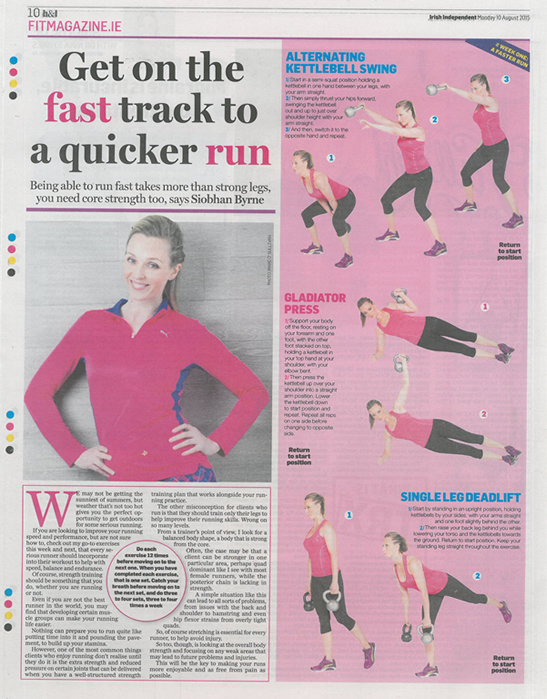Being able to run fast takes more than strong legs, you need core strength too.
We may not be getting the sunniest of summers, but weather that’s not too hot gives you the perfect opportunity to get outdoors for some serious running.
If you are looking to improve your running speed and performance, but are not sure how to, check out my go-to exercises this week and next, that every serious runner should incorporate into their workout to help with speed, balance and endurance.
Of course, strength training should be something that you do, whether you are running or not.
Even if you are not the best runner in the world, you may find that developing certain muscle groups can make your running life easier.
Nothing can prepare you to run quite like putting time into it and pounding the pavement, to build up your stamina.
However, one of the most common things clients who enjoy running don’t realise until they do it is the extra strength and reduced pressure on certain joints that can be delivered when you have a well-structured strength training plan that works alongside your running practice.
The other misconception for clients who run is that they should train only their legs to help improve their running skills. Wrong on so many levels.
From a trainer’s point of view, I look for a balanced body shape, a body that is strong from the core.
Often, the case may be that a client can be stronger in one particular area, perhaps quad dominant like I see with most female runners, while the posterior chain is lacking in strength.
A simple situation like this can lead to all sorts of problems, from issues with the back and shoulder to hamstring and even hip flexor strains from overly tight quads.
So, of course stretching is essential for every runner, to help avoid injury.
So too, though, is looking at the overall body strength and focusing on any weak areas that may lead to future problems and injuries.
This will be the key to making your runs more enjoyable and as free from pain as possible.
Week 1: A faster run
Alternating kettlebell swing
- Start in a semi-squat position holding a kettlebell in one hand between your legs, with your arm straight.
- Then simply thrust your hips forward, swinging the kettlebell out and up to just over shoulder height with your arm straight.
- And then, switch it to the opposite hand and repeat.
Gladiator press
- Support your body off the floor, resting on your forearm and one foot, with the other foot stacked on top, holding a kettlebell in your top hand at your shoulder, with your elbow bent.
- Then press the kettlebell up over your shoulder into a straight arm position. Lower the kettlebell down to start position and repeat. Repeat all reps on one side before changing to opposite side.
Single leg deadlift
- Start by standing in an upright position, holding kettlebells by your sides, with your arms straight and one foot slightly behind the other.
- Then raise your back leg behind you while lowering your torso and the kettlebells towards the ground. Return to start position. Keep your standing leg straight throughout the exercise.
